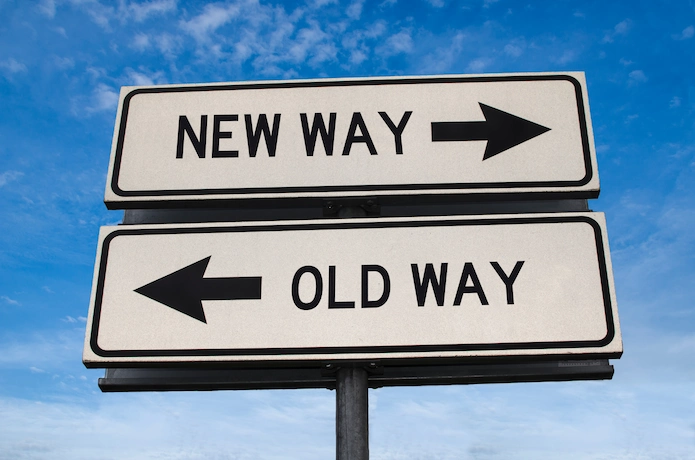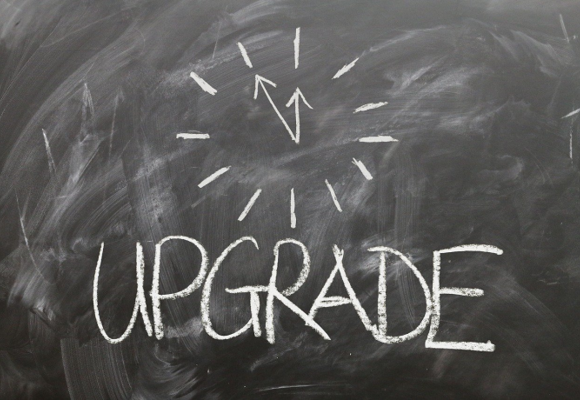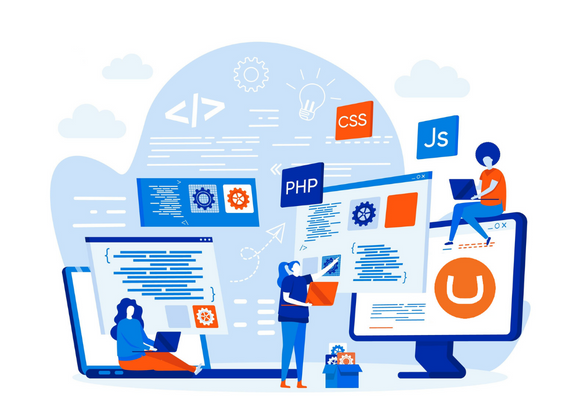April 19, 2024
Struggling to connect with your audience online? A key fact to note is that a Digital Experience Platform (DXP) can help you scale personalized interactions. Our article will guide you through the differences between a DXP and a simpler Content Management System (CMS), showing how each serves unique roles in your digital strategy.
The Evolution from CMS to DXP

CMS started as a simple way to manage websites. Now, DXP has grown out of that, offering more tools like personalization and data analysis to meet the needs of today's digital users.
How DXP scales personalized engagement for the digital age
DXP uses powerful tools to help businesses reach out to their customers in a way that feels personal. It does this by using data about how customers act and what they like. This means messages from companies can match what each customer is interested in, everywhere they go online.
With DXP, sending the right message at the right time becomes easier for marketers. They can use social media, emails, websites, and more to make sure their message hits home.
Businesses also get tools to see how well their efforts are working. They can check if people are engaging with their content through web analytics and adjust strategies quickly if needed.
Plus, DXP makes it possible to manage all these tasks in one place. This helps businesses save time and keep up with fast changes in digital marketing trends. Moving on after understanding how DXP creates personalized experiences for every user is crucial for getting ahead in today's market.
Consumers controlling the digital experience
Consumers now have the power in their hands. They choose how, when, and where they interact with content and services online. This control shapes businesses' strategies for offering personalized experiences across different channels like mobile apps, websites, and social platforms.
By using tools from DXPs, companies can gather insights from customer behavior data. This helps them to fine-tune interactions to match individual preferences.
Understanding the Architecture of CMS and DXP
The architecture of a CMS sets the stage for how content is managed and delivered. It's like the backbone that supports web pages, blog posts, and media
files. A CMS makes it easy to store all your digital assets in one place.You can think of it as a library where everything is organized and easy to find. This system lets people without tech skills make updates and add new content easily. Tools like WordPress show how versatile CMS can be, handling everything from simple websites to complex portals.
A DXP goes beyond by linking various customer touchpoints across channels, regions, and languages. Imagine it as an advanced version that not only manages content but also personalizes user experiences based on data insights.
With features like IAAS (Infrastructure as a Service) for cloud computing and headless CMS options for more flexibility in front-end development, DXPs offer businesses powerful tools to engage customers more effectively.
They mesh well with other systems such as CRMs (Customer Relationship Management systems), making sure every interaction with your brand feels personal no matter where or how it happens.
The Benefits of Using a DXP
Moving from the structure of CMS and DXP, it's clear that a DXP offers more. DXPs help businesses give customers what they want on any digital screen. This means you can reach people everywhere - on their phones, computers, or even smart home devices like Alexa. They use data to show each person something special just for them.
DXPs connect different parts of the web like social media, email, and websites so everything works as one big system. This lets companies understand their customers better by seeing how they move across these digital places.
With tools for making content that changes based on who's looking at it, DXPs ensure messages always hit the mark in personal ways—boosting sales and customer happiness.
Exploring Personalization in DXP

DXPs make it easy to show users what they like. They collect user data from many sources and use this information to give each person a unique online journey. This way, when someone visits a website or uses an app, the content matches their interests and needs.
DXPs are smart because they remember what users do and prefer. They can suggest products, services, or content that fits them best.
For business owners and managers, using a DXP means you can send the right message at the right time. You don't have to guess what your customers want; the platform does it for you by analyzing data from actions across devices like phones and laptops.
This is how DXPs bring brands closer to their audience by making every digital interaction feel personal and relevant.
Platform DXPs vs Composable DXPs
Platform DXPs give you everything in one package, while Composable DXPs let you pick and choose parts to fit your needs. Learn more to see which fits your business best.
Overview of Platform DXP
A Platform DXP acts like a big toolbox for businesses, offering a set of tools to create and manage digital experiences. It combines services like web content management, marketing tools, and commerce into one package.
This makes it easier for companies to deliver personalized content and engage with their customers online. Unlike piecemeal solutions that handle tasks separately, a Platform DXP brings everything under one roof.
This means better control over the digital landscape without needing separate pieces of software.
Sitecore is an example here, providing both platform-based and more flexible options for businesses to choose from based on their needs. With Platform DXPs, customization is still possible but within the framework provided by the single vendor solution.
This approach suits companies looking for an all-in-one solution to simplify their operations in the cloud or on-premises environments while managing customer engagement through various channels like mobile apps or IoT devices.
Value of Platform DXP
Platform DXP stands out because it gives businesses all they need to create personal and connected user experiences. It combines web content management, digital marketing, and e-commerce tools in one place.
This lets managers control how their brand interacts with customers across different online channels. With a platform DXP, companies can send the right message at the right time, making every interaction feel unique and personal.
This kind of system also helps speed up how fast businesses can move online. They can launch new campaigns or update their site without waiting for IT help. Plus, it makes sure their messages work well on phones, tablets, and computers everywhere.
Using a platform DXP means less worry about technology problems and more focus on growing your business.
What is a Composable DXP?
A Composable DXP is a modern way to build websites and apps. It uses pieces or modules that work together easily. This setup lets companies choose what they need, like analytics, artificial intelligence (AI), and marketing tools, to create a unique online experience for their users.
Because it's modular, businesses can change or add parts without starting from scratch. This makes it agile and keeps costs down.
Using a Composable DXP means businesses can adapt quickly to new needs or trends. They put together the specific functions they want, such as customer data analysis or personalized content suggestions.
The platform supports quick changes and integrates with different systems like databases and application programming interfaces (APIs). This flexibility helps companies stay ahead in the digital space by offering up-to-date and tailored user experiences.
Value of Composable DXP
Understanding what a Composable DXP is sets the stage for seeing its worth. A key plus of using a Composable DXP is that it saves money. By letting businesses build their own perfect set of tools, they don't have to spend on features they won't use.
This approach also speeds up how quickly new ideas can reach the market because teams can focus just on what needs improvement or addition without redoing everything.
Another big win with Composable DXPs is how flexible and quick to change they are. Since each part works alone, updating one doesn’t disrupt the others. This means your digital space can grow and shift as fast as your business does, keeping you ahead in a fast-moving world.
Key Considerations When Choosing a DXP
Choosing the right Digital Experience Platform (DXP) requires understanding your business needs and technology goals. Look for platforms that support quick changes, easy updates, and tools that help your team work better together.
The MACH Approach to Composable
The MACH approach stands for Microservices, API-first, Cloud-native SaaS, and Headless. It forms the core of composable DXPs by allowing business owners to pick and choose specific technology components that work best for their needs.
This way, integrating multiple systems becomes much easier through standard connection points. MACH supports agile and lightweight solutions over traditional heavy platforms. MACH makes your tech stack like LEGOs – highly flexible and ready to change.
Using this approach, each part of your DXP can evolve without disrupting other areas. For instance, if you need a new tool for inventory management or want to add augmented reality features to improve customer engagement, you can do so without overhauling the entire system.
This modularity means businesses stay nimble, adapting quickly to market changes or technological advancements with minimal downtime.
The importance of low-code/no-code solutions
Low-code/no-code solutions are key for business owners and managers. They make building and changing digital platforms fast and easy. You don't need deep tech skills to use them. This means your team can set up or update websites, apps, and more without waiting for IT help. It leads to quicker launches and updates in the market.
These tools cut down the time and money spent on developing tech projects. Businesses can automate tasks, adjust quickly to new trends, and offer better online experiences with less effort.
They encourage people across your company to contribute ideas that improve customer service without the complex code work usually needed.
The role of front-end developers
Front-end developers play a key role in shaping the user's digital journey. They use tools and frameworks like JavaScript to make sure websites and web apps not only look good but work fast and easy for everyone.
These experts need to pick CMSs that fit with cloud tech, ensuring sites can update quickly and safely without trouble. Since laws like GDPR exist, these developers also have a big job making codes that keep user data safe.
They bridge the gap between what users see and how they interact with digital platforms across various devices. With DXPs, front-end developers can create personalized experiences for users all over the world.
They use insights from data analysis, AI, and learning machines to make apps smarter. This way, businesses can meet their customer's needs better and faster on every screen they use.
The ease of upgrading and re-platforming
Upgrading and switching platforms can be easy with the right digital experience platform (DXP). These platforms support business growth by making it simple to add new features or change your setup.
You don't need big teams of developers every time you want to make a change. Many DXPs are built on flexible architectures like microservices, APIs, cloud services, and headless systems. This setup lets businesses adapt quickly without disrupting their operations.
Choosing a DXP that offers low-code/no-code options is smart for upgrading and re-platforming. It means people who aren't professional programmers can make changes or update the system with little training.
Tools like Sitecore's digital experience platform offer ways to manage your content and user interactions more efficiently across multiple channels. This approach saves time and money in development cycles, helping keep projects moving fast while giving you control over costs.
FAQs
1. What is a DXP platform?
A DXP platform is a digital experience platform that lets businesses create, manage, and improve their web presence across many devices and channels.
2. How does CMS differ from DXP?
CMS, or content management system, helps manage website content. DXP offers more by improving the whole digital experience with tools like analytics and personalized marketing strategies.
3. Can DXPs help with mobile marketing?
Yes, DXPs support mobile marketing by making sure customers have a good experience no matter what device they use.
4. Why choose SaaS-based DXP?
SaaS-based DXPs are on the cloud, making them easier to update and scale up as your business grows without worrying about data security.
5. Do I need DevOps for my DXP?
Using DevOps practices with your DXP can make continuous integration smoother, ensuring your digital platforms stay up-to-date and secure.
6. How do privacy policies fit into DXPs?
Privacy policies are crucial in DXPs to protect user data and meet legal requirements while still offering a personalized customer-centric experience.



